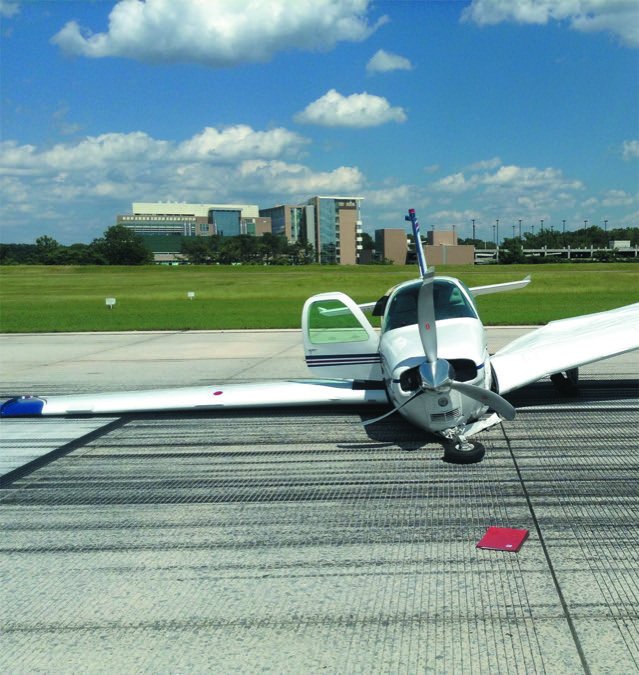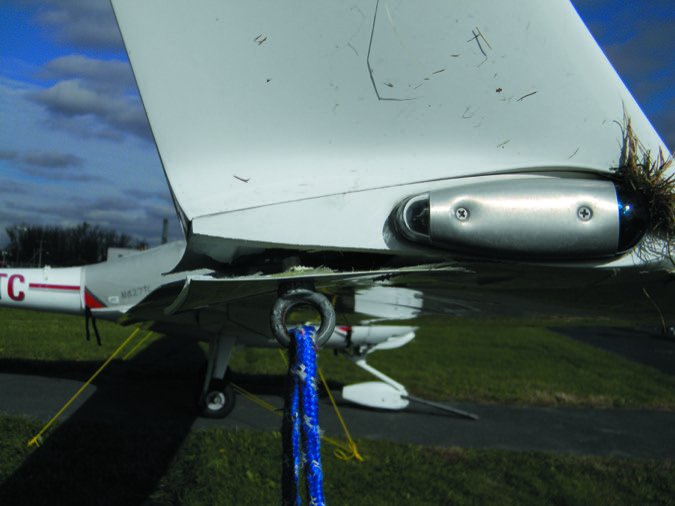The soft aviation insurance market has been going on for 10 years, such a long time that many underwriters, brokers and their clients have never experienced anything else. Among aviation insurance people, there was more and more talk about this so-called new normal as if the wildly cyclical nature of the business had disappeared and would never return.
And while this latest market swing has a somewhat tentative feel to it, there are reasons to think it is the beginning of the next hard market cycle. And reasons to think not.
As we do every couple of years, we recently took a close look at the state of aircraft insurance with the buyer in mind. Here’s our synopsis.
Flash Back to 2008

Most industry professionals place the beginning of the current soft market somewhere around 2008. At the time, insuring general aviation aircraft was fairly profitable for most insurers. As early as 2006, the relative profitability of this part of the business had led several companies to start new divisions to insure general aviation business. Both C.V. Starr and Allianz had started substantial GA operations.
Beginning in 2010, there was a further influx of companies starting their own aviation divisions. These included Travelers, SwissRe, QBE, Hallmark, XL Catlin, Great American and W.R. Berkley. General aviation did not grow much in that time, so by 2016 there were a lot more insurance dollars chasing each airplane and helicopter than there had been 10 years before. The market was awash in what insurers refer to as “capacity.” Capacity is basically the capital required for insurers to set aside as reserves as they take on the risk that comes with new insurance policies. As the new companies entered the market, the legacy companies, including USAIG, Global Aerospace, AIG and Old Republic (Phoenix), were forced into a defensive position in order to maintain their market share against the new invaders, and we were off to the races.
Most aviation underwriters are smaller parts of big companies and so we often don’t know the financial results of specific aircraft insurers with any great certainty. The large publicly held companies rarely make numbers for smaller subsidiaries available, so much of what we know about how companies are doing is informed gossip. The rest is trying to read the entrails of who is hiring, who is firing, who is increasing limits, who won’t write helicopters anymore, who had the Gulfstream-you get the point. But insurers do keep track of each other’s losses, and there is much commonality in the reinsurers that they use.
What About Rates and Requirements?

In speaking with brokers, underwriters and reinsurers, there is no doubt that over the past 10 years, rates for most general aviation aircraft have been coming down at each renewal. As one broker put it, speaking of the soft market, “Let’s say that the current company offered to renew a policy at the same premiums as expiring, and it was a pretty good deal. But it seemed like there was always some company that would do it for less. If I didn’t tell my client about the cheaper price, I wasn’t doing my job, plus I was risking losing the business to another broker. So, faced with the loss of business, the current company would often agree to match the cheaper bid,” he said.
But according to brokers we spoke with, more and more insurers are now insisting on increases, and walking away if their terms are not met. Just when this started is the subject of some debate. Several companies recently told us that they had started trying to increase their premiums.
In the past several years, price was not the only change brought by the soft market. Underwriting guidelines had also “softened.” Some insurers had prior to the last soft market required pilots flying turbine airplanes to attend annual sim school. In the face of credible competition, some companies would allow the pilot to attend school every other year, or to train in the airplane instead of a simulator. In some cases, companies began to offer higher limits of liability, especially to turbine owners. Many companies started to offer value-added services, ranging from discounts on upset training to webinars on safety topics, onsite after-hours maintenance services to SMS audits or emergency response plans.
More insurers would write policies with zero deductibles on fixed-wing airplanes. Especially on professionally flown corporate airplanes, some pilot requirements were relaxed, often to “any pilot approved by the chief pilot.” Some underwriters relaxed guidelines on what limits of liability they would offer, especially for owner-flown turbines. Consider that $25,000,000 for a single owner pilot became more and more common, and at times $50,000,000 was available.
The primary beneficiaries of the soft market have been pilots and owners of turbine airplanes, both professionally and owner flown. Piston owners have seen less change in the premiums that they pay, the limits available to them or the training that they are required to do. For most turbine operators, their premiums have decreased substantially over the past 10 years, and for many others they could train at schools that were nearer to where they live, or even to train less frequently. Many finished up the last soft market insured in a more expensive airplane than they were 10 years before, with more liability coverage, and paying less money for all of it.
That’s All Changing

We spoke to brokers, underwriters and reinsurers to understand what was happening inside their business. There was some disagreement about details, but widespread accord about the bigger picture. Almost everyone felt that general aviation underwriting had become unprofitable as a whole, perhaps as far back as five years ago. The main reason, it was universally felt, was that premiums had been steadily dropping for more than 10 years, and were no longer sufficient to pay even for routine attritional losses.
Attritional losses are the smaller but more frequent claims, and usually do not involve bodily injury. These include things like hangar rash, bird strikes, foreign object damage, hail damage, taxi accidents and damage caused by motor vehicles. In some cases, especially those involving turbine aircraft, these claims can be quite expensive, often wiping out many years of premium income.
One underwriter cited what he called the “miss factor.” He likened the current market with 14 underwriters to the big sky theory of midair collisions. He explained that back when there were only five or six companies, most of them had one or more bell-ringer claims each year. The companies knew they were coming and charged their clients enough so that they could put money away for them. “With all the companies that we have now, some will skate for a year or two, especially the fairly new ones. So, a couple of years, there were no huge losses, so they think that the rates they are charging are adequate. Then in year three, along comes the big bang,” he said.
In his view, many of the companies were on such slim margins that one or two of these large losses might mean the difference between a year that was an anemic gain and a year of serious financial loss. He also added that enough of the companies had experienced one or two large claims that he felt that after 10 years there were few mavericks left ready to undercut the current market rates.
Other factors pushing the market toward charging higher rates include a lack of investment opportunities and the increased cost of repairing airplanes and settling lawsuits. One of the anomalies of this soft market cycle was the lack of opportunity for insurers to park their money in income-producing investments. In past soft cycles, these have allowed insurers to have an underwriting loss, but to make up the difference with investment income. For most of its 10 years, interest rates have been at historic lows and there has been very little opportunity for insurers to make up for poor underwriting results with investment income.
The other thing about this hard market cycle that is different from others is that there is a continued abundance of capacity, at least so far. In the past two years, there has only been one major underwriter who has left the market, as we’ll as one specialty insurer. Most of the capital available to underwriters last year is still there. This is what makes some question the depth and longevity of this incipient hard market.
Expensive Repairs

Other factors cited by companies were the increased cost of repairing/replacing aircraft. Some of the larger claims in the past few years have been the total losses of late-model turboprops and jets. Partly this is due to the increased values and population of a number of new airplanes. Cessna CJ4s and Phenom 300s were rare 10 years ago, but their numbers are increasing. New ones tip the scales at almost $9,000,000. We see growing numbers of these very expensive airplanes, many flown by their owners. On the corporate side, a G650 or the latest Global or Falcon can easily top $70,000,000. At the same time, insurers told us that the cost of repairing damaged airplanes is also going up.
One reinsurer told us that over the past 10 years, the insurance rates for owner-flown turbine airplanes had gradually diminished, to the point where there was not much rate difference between professionally flown jets and turboprops and their owner-flown counterparts. He also pointed out that those ownerflown turbine aircraft also tended to carry higher liability limits than their piston-powered brethren. Moreover, the passengers in the back of these aircraft were often quite affluent and when liability actions were brought, these cases often went to the policy limit. In addition to the aviation disasters that spring to all of our minds, other factors are at work.
The same reinsurer cited catastrophic losses outside aviation as a cause for the market change. Insurers and reinsurers participate in a tremendously wide area of operations, in part because they need to diversify to protect themselves from a specific disaster.
The hurricanes of 2017 caused property and casualty insurers and reinsurers to face the fact that they could no longer subsidize the underperforming aviation segment of their business in the face of these losses. The California wildfires of this year will probably aggravate the situation. The parent companies of many aviation underwriters and their reinsurers will all be affected.
All of these factors have led aviation insurance underwriters to get serious about bringing their rates and loss ratios back to what are described as profitable levels. Most of these changes will show up in the arena for turbine-powered airplanes.
Owners of piston aircraft may see smaller increases at their renewals, at least so far. Corporate operators, the sacred cows of the business owing to their excellent equipment, training and safety records, are seeing what are described as moderate increases.
Underwriters of corporate airplanes are looking for varying percentages, depending among other things upon whether or not they have had recent claims. Just when the hard market began is the subject of some debate. Several insurers told us that they had started trying to increase their premiums as much as two years ago, but most people felt that the full-fledged hard market started between three and six months ago.
Targeting Turbines
Piston owners may not be seeing significant increases immediately, but underwriters are looking carefully at what has cost them the most money in recent years. One underwriter told us that his company was considering no longer writing piston twins built before 1985 as new business. Another was looking at cutting back the liability limits he would offer on cabin-class twins.
Two told us that they had been raising their rates across the board for more than a year. We also heard from a couple that they were reviewing school requirements with an eye toward making recurrent training at a formal school mandatory for more types of airplanes. Older pilots and unusual aircraft types may come under scrutiny.
The real action is happening to the turbine owner-pilots who are faced with increases from 10 percent to as high as 30 percent. Those who have had recent claims may see a higher rate still, even if the claim was not an at-fault one. The increases that insurers are asking for from corporate operators tend to be lower, between 5 percent and 15 percent, but it is telling that they have gone from slight reductions a year ago to slight increases this year.
Another odd feature of this new cycle is the spectacle of insurers who would rather sell less of their product than more-or not even sell their product in some cases. Price hikes are not news. But not being able to find the aviation insurance product that you feel you need, and that you had last year-that is new. This is especially interesting, following hard on the heels of the excesses of the soft market with its seductive limits and low premiums. And it is happening in the midst of a market with plenty of capacity.
We spoke to several underwriters who were trying to cut down their exposure to owner-flown airplanes with values above $5,000,000 and limits of liability higher than $5,000,000. This does not seem to be a universal rule, but it does look like where many insurers are headed.
Owners of more expensive airplanes or owners who feel they need more liability protection may be forced to consider a quota share placement. A quota share or vertical placement involves several insurers who each take a percentage of any claim. One underwriter acts as the “lead” and issues the policy, handles claims and takes care of other day-to-day servicing. In this way, each insurer is only on the hook for its percentage of a claim.
This allows them to insure larger numbers of smaller units, and to make their results more predictable. This technique has been used for years to insure airline and aerospace manufacturers. A growing number of high-value owner-flown airplanes are becoming insured this way. In some cases, owners who feel that they need more liability coverage than their carrier is willing to provide them can purchase excess liability insurance. Excess liability is simply an additional layer of liability above what’s provided on the aircraft policy. The liability coverage on the airplane typically responds first, and the excess liability is only tapped if the aircraft liability coverage is exhausted.
Looking Ahead
When we asked aviation insurance industry people what they felt the future held, we got a wide variety of responses. Most people thought that rates would return to higher levels, perhaps 80 percent of what they had been at the beginning of the soft market. Some felt that the market would continue to harden for a year or two, but would level off as soon as underwriters were back out of the red. One person felt that because of the continued large amount of capacity still available in both the insurance and reinsurance markets, there was unlikely to be drastic change.
Our view is that rates will increase to the point where underwriters will no longer be reluctant to underwrite, and may stall there. The super-high limits and hull values that could easily be insured two years ago may continue to be elusive or to require special handling such as vertical placements. We also think that pricing on aircraft that are perceived by underwriters as low risk may start to go down again. Given the number of insurers in the market, the amount of capital available to them and the continued lack of other investment opportunities legally available to insurers and the carriers that own them, we have trouble visualizing a monolithic hard market.
In view of all this uncertainty, our advice to buyers of aviation insurance is unchanged. The old rules still apply. The object is to make yourself an attractive risk, more than ever. Fly regularly and stay current. Underwriters don’t have much of a picture of you, but are likely to put their bet on the pilot who flies regularly.
Train every year. If you are in a turbine you probably are required to do this anyway. If you are in a piston-powered airplane, do a WINGS phase, or an owner’s group refresher. It paints a picture of you as a safe, careful pilot. Unless there is a compelling reason to change insurers, stay with the insurance company you are with now. Underwriters do value relationships, and you will suffer less in a rising market with your current carrier than with anyone else.
We didn’t say don’t shop! We are huge believers in shopping and if the situation is right, changing companies makes sense. In a market like this, where the providers would rather sell less of their product instead of more, changing carriers may we’ll be a self-inflicted wound. Give your insurance provider time to get you the best deal, especially if you are flying a high-valued turbine, making a transition or carrying high limits of liability.
Bear in mind that this year, that may take much longer than it did last year. When that annoying form comes in the mail, fill it out and send it back in. If your broker has more time, he or she can do a better job for you. Give them the tools to get you the best renewal available.
And if you are considering stepping up, make sure you have looked into the insurance implications before you commit yourself.
Contributor Jon Doolittle is Aviation Consumer’s longtime aviation insurance expert and a broker at Sutton James, an Optisure Risk Partner, based at Hartford Brainard Airport in Connecticut.


